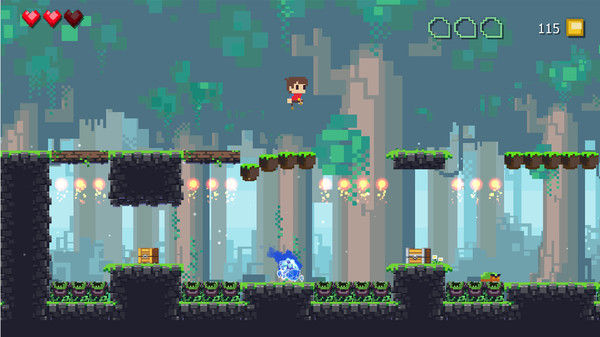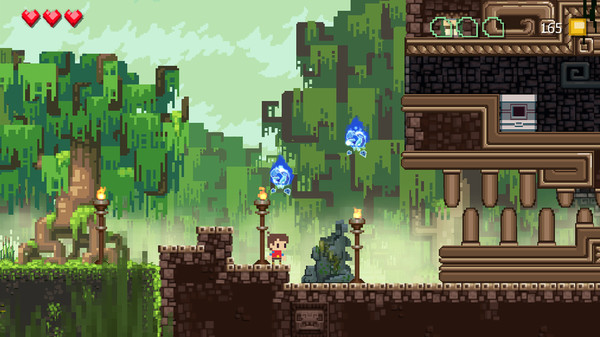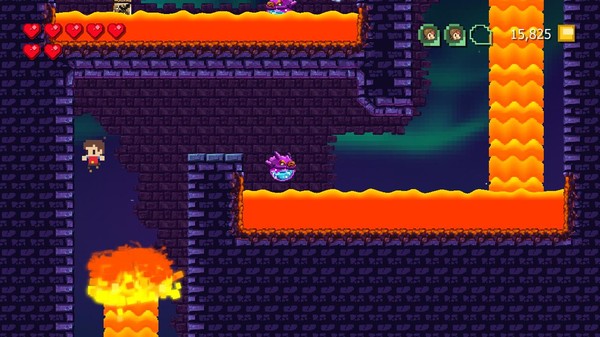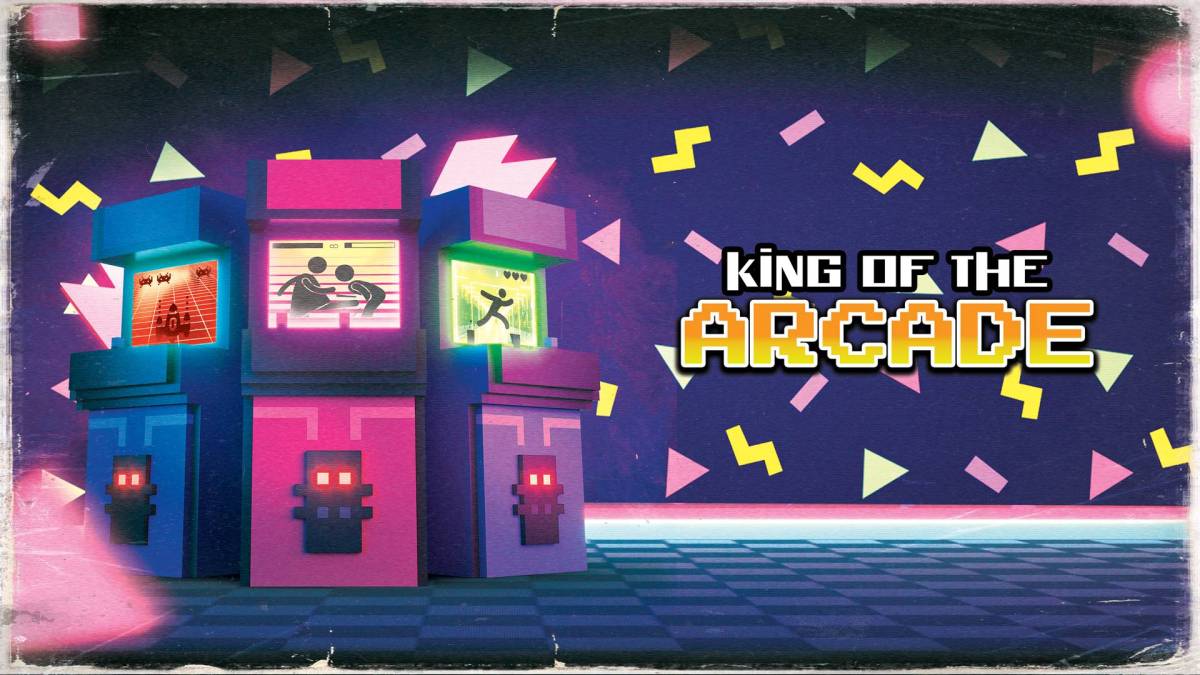
Platforms: Windows, OS X, Wii U, iOS, PlayStation 4 (reviewed), Xbox One
The hallmark of a great platformer is having such tight, precise controls and intuitive level design that when you fail it almost always feels like your fault. On the flip side, the hallmark of a terrible platformer lies in having such shoddy controls and piss-poor level design that dying almost always feels like the game has cheated you in some way. Unfortunately for Adventures of Pip, it falls into the latter category for the majority of its six to eight hours.
Adventures of Pip starts out innocent enough as a simple 2D action platformer where you play as Pip and take on an adventure to rescue a princess that has been kidnapped by an evil witch. It feels like the story skews more towards children and families, but I’ve heard better writing in some of the cartoons my niece watches. That being said, it’s pretty standard stuff that we’ve all seen before. It gives Pip motivation and gets you from one level to the next. It’s just pretty boring, but I can give it a pass on that because a platformer should be all about the gameplay. That’s where my leniency for Adventures of Pip ends.
The gimmick here is that Pip can evolve into three different forms as he defeats certain enemies. Each form has its own unique advantages and you’ll have to utilize all three in most stages to see them through to completion. Pip’s most basic form is that of a single pixel. In this form, he is a red square that can jump the highest of the three and also float. With the float mechanic, holding the jump button allows you to slow Pip’s descent and control him more precisely. While this single pixel form is the most basic, it’s also the one that works the best. As you begin to evolve Pip a number of problems begin to rear their ugly heads.
Pip’s second evolution, which can best be described as 8-bit, is by far the most infuriating of the three because it utilizes one of the worst wall jumps I’ve seen in a game. You can’t continually scale one wall and must always jump back and forth between walls if you want to make any vertical progression. So trying to re-position on a wall you’ve just jumped off of to get a better angle at the next wall is impossible. This leaves very little room for error and in numerous situations I either found myself back at the bottom of a vertical platforming section, stuck in a pit of spikes, or dead in the abyss. The unintuitive nature and overall imprecise feel led to many bouts of frustration that I never expected from this game.
As you evolve Pip into his third form he’ll have a 16-bit look and gain access to the use of a sword while losing his wall jump abilities. Pip’s sword can be used to break certain blocks and, of course, fight enemies. The swing timing of the sword and hit boxes of enemies felt off, as I would often whiff and have an enemy plow right into me. In this form, he will also be able to push and pull boxes that allow access to certain areas and let you solve minor puzzles.
Across all three evolutions, the platforming left much to be desired. It’s imprecise and inconsistent and led to many unpleasant sections that I had to do over and over. On top of that, the level design often added to the frustration as there were multiple times that rather than having to rely on actual platforming skills (which was nearly impossible anyway) you had to use trial and error to figure how the stage was going to screw you over before you could proceed. Between instant death traps and questionable enemy placement (that cause a knock back effect that would put Ninja Gaiden to shame), it’s nearly impossible to make it through a section on the first attempt. What makes things far worse is the horrible checkpoints that will, in most cases, have you doing multiple sections like this before ever seeing one. This trial and error design used to create pseudo difficulty isn’t challenging as much as it is aggravating. And it certainly isn’t fun or rewarding.
Outside of the platforming there is a bit of a collection aspect, as you’ll be tasked with the optional quest of rescuing three villagers in each level. For the most part rescuing them is completely pointless, unless you’re a completionist or a trophy hunter, so wasting time and dealing with the aforementioned terrible controls isn’t usually worth the trouble. There are a couple of exceptions to this, as you can rescue a merchant and a blacksmith. By doing this, you’ll unlock their shops and be able to buy items with the pixels you pick up from slain enemies and treasure chests. The items available for purchase range from useless to almost necessary to complete the game. You’ll definitely want to buy heart containers and a few other items that will help keep you alive if you plan to see the game through to the end.
At its best, Adventures of Pip is simply boring and, at its worst, it is an infuriating test of patience. Between imprecise platforming and questionable level design, most of my time was spent replaying the same sections over and over just wishing I was playing something else. If I’m being completely honest, I can’t really think of one redeeming quality that Adventures of Pip has and for that reason I could never recommend it, in good conscience, to anyone. There are so many better, more fun options out there and I’d recommend seeking those out before you play this.







